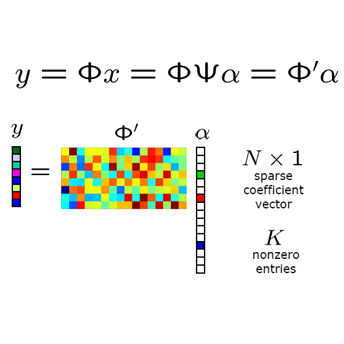Large-scale environmental sensing with a finite number of mobile sensor is a challenging task that requires a lot of resources and time. This is especially true when features in the environment are spatiotemporally changing with unknown or partially known dynamics. However, these dynamic features often evolve in a low-dimensional space, making it possible to capture their dynamics sufficiently well with only one or several properly planned mobile sensors. This paper investigates the problem of dynamic compressed sensing (DCS) of an unsteady flow field, which takes advantage of the inherently low dimensionality of the underlying flow dynamics to reduce number of waypoints for a mobile sensing robot. The optimal sensing waypoints are identified by an iterative compressed sensing algorithm that optimizes the flow reconstruction based on the proper orthogonal decomposition (POD) modes. An optimized robot trajectory is then found to traverse these waypoints while minimizing the energy consumption, time, and flow reconstruction error. Simulation results in an unsteady double-gyre flow field is presented to demonstrate the efficacy of the proposed algorithms. Experimental results with an indoor quadcopter are presented to show the feasibility of the resulting trajectory.
翻译:具有有限数量移动传感器的大型环境遥感是一项艰巨的任务,需要大量资源和时间。当环境中的特征在瞬间变化,发生未知或部分已知的动态时,尤其如此。然而,这些动态特征往往在低维空间中演变,从而有可能以一个或几个适当规划的移动传感器充分捕捉到其动态。本文调查了不稳定流动流场动态压缩感测(DCS)的问题,这种动态感测利用了潜在流动动态的内在低维度,以减少移动感测机器人的路径点数量。通过迭代压缩感测算法确定了最佳的感测路点,该算法优化了以正确或横向分解模式为基础的流动重建。然后发现优化的机器人轨迹绕过这些路径点,同时尽量减少能源消耗、时间和流动重建错误。模拟不稳定的双向流场的结果将展示拟议算法的功效。与室内四分镜仪的实验结果将展示出由此形成的轨迹的可行性。



